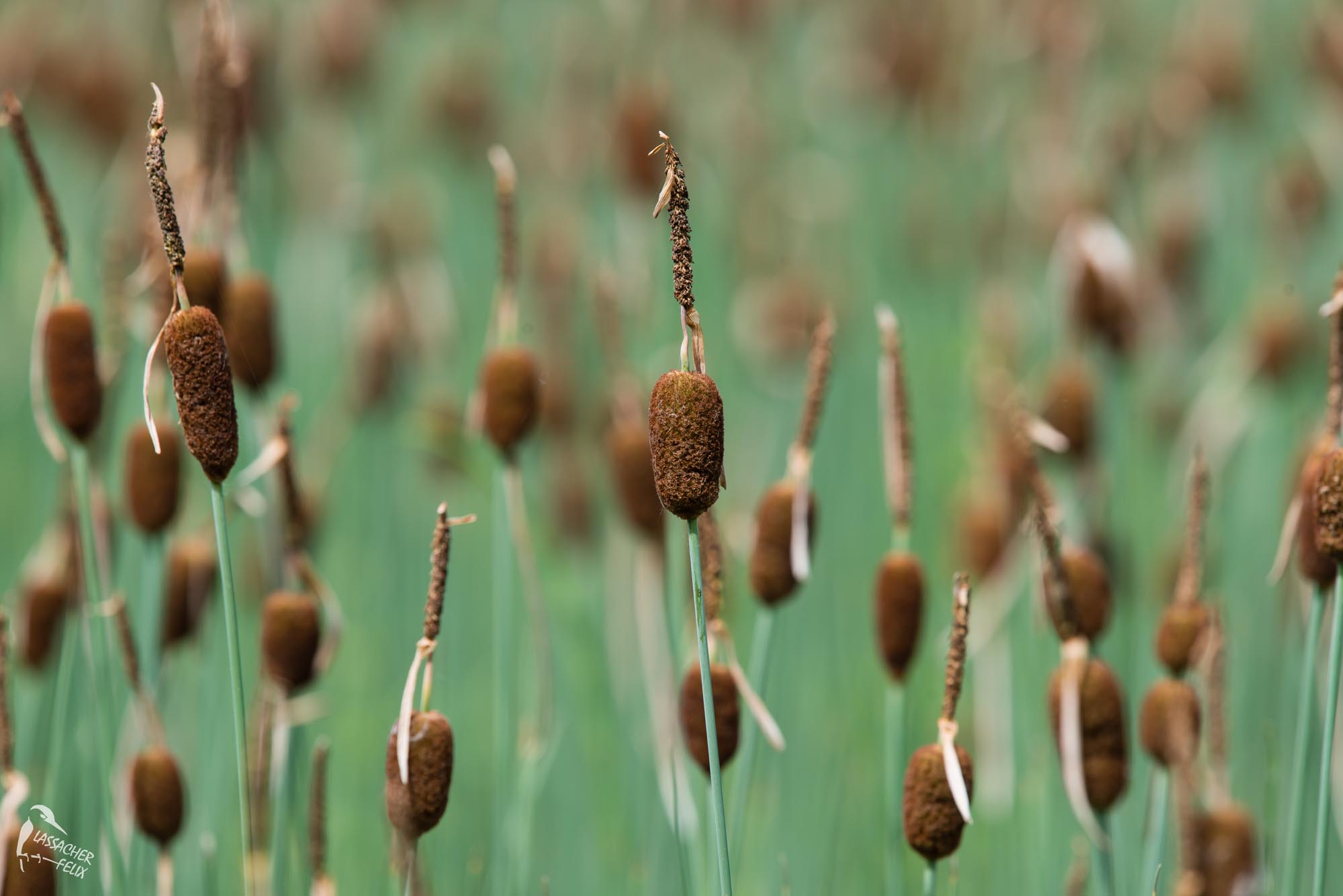
Its name suggests its size. With a height of 30 - 80 cm, the Dwarf bulrush (Typha minima) is clearly smaller than other cattail species. Its occurrence is an indication of an intact river landscape. It colonises riparian areas with sandy, silty substrates, e.g. in fresh tributaries, and is a typical pioneer species of large alpine floodplains.
Without redistribution of the river branches and the soil, the dwarf bulrush, which is weak in competition, would quickly be overgrown by higher-growing species such as reeds or willows. Like other flagship species of alpine floodplains, it needs natural dynamics to survive, which repeatedly create unvegetated sites for its re-colonisation. These are optimal conditions for the dwarf bulrush, as it is a light-loving plant and does not tolerate shading.
In its reproduction, the small bulrush relies on mass and speed. It produces many fine seeds that can be transported by wind and water. It can also reproduce quickly vegetatively via thick runners.
The dwarf bulrush used to have a large occurrence along the large river systems in the Alps as well as in the Alpine foothills. Due to consistent river regulation, it has experienced dramatic declines over the last 100 years. Today it is acutely threatened with extinction in the Alpine countries.
Isolated remnants can still be found on the Tyrolean Lech. Along with the populations on the Rhine and the Dornbirner Ach, these are the largest populations in the Alpine region. Austria thus bears the main responsibility for the conservation of the dwarf bulrush in Europe.